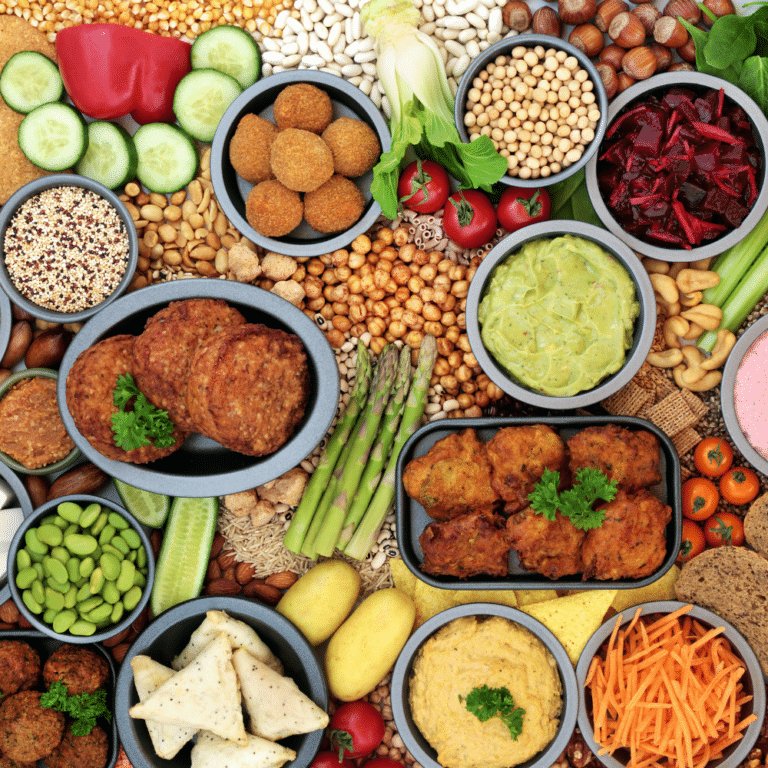There’s something about the crackle of a flame, the way it dances and flickers beneath a pot, that feels timeless. It whispers stories of our ancestors who cooked not with convenience, but with care. Their kitchens were sacred spaces where time slowed, where ingredients transformed through patience and fire into something that didn’t just feed the body but healed the soul.
Today, we live in a world that rushes us at every turn. “Faster,” it says, “faster.” Air fry this, instapot that, microwave and be done with it. The hurried rhythms of our modern lives have infiltrated even our meals, urging us to cook quicker, eat faster, and move on. But when did we decide that time spent with food was time wasted?
The Lost Art of Slow Cooking
Growing up, my mother’s kitchen was a place of alchemy. She didn’t just cook—she created. I’d watch her knead dough with deliberate hands, her bangles clinking softly as she worked. I’d see my father helping her pounding spices and making masalas with the stone mortar, releasing aromas that perfumed the entire house. These moments weren’t rushed. They were a meditation, a rhythm that felt as natural as breathing.
One winter evening, I remember her making Makki Di Roti and Sarsoon Da Saag. Nothing fancy—just maize dough rolled out and cooked on the cast iron tava, paired with her most delicious vibrant greens of mustard leaves simmering in spices and homemade butter.. yummmm.. Her care as she pressed each roti just right between her palms, the way she hand mashed the saag with a wooden ladle until it was perfectly creamy, now that’s what made it extraordinary. I still recall how it warmed me inside out, how each bite felt like a comforting embrace.
Even though my mommy is no longer on this earthly plane, she lives on with us through her passion for cooking for her loved ones from near and far. Cooking with every ounce of our existence was her blessing us three sisters and one day, I hope to pass on this cherished delights of cooking and sharing to my daughter, so she can continue this legacy of love and warmth our family has shared.
Cooking like that isn’t just about food. It’s about intention. It’s about showing up fully for something as simple—and as profound—as a meal.
The Soul of Fire and Food
There’s a reason food needs real fire. It’s alive. It changes and evolves as it cooks, releasing its flavors, its essence, its energy. That can’t be hurried. A slow-roasted brinjal for baingan bharta, blistered and smoky, is a conversation between heat and patience. A pot of kadhi bubbling gently on the stove feels like a lullaby, soothing and tender.
When I hear the hum of an air fryer or the beep of a microwave, I wonder what we’ve lost in our pursuit of convenience. Sure, these gadgets save time, but do they capture the soul of cooking? The depth of flavor, the tactile connection, the transformation that happens when food meets fire—all of that takes time. It takes care.
And maybe that’s why our ancestors were stronger—in body, mind, and spirit. Their food wasn’t just consumed; it was nurtured, and in turn, it nurtured them back.
A Love Affair with Food
Daddy always says—hurry makes worry & I learnt that on hurry-curry cooking expedition. To say the least, it was a disaster. I was stressed, chopping vegetables carelessly, throwing spices into a pan without tasting. The result was bland, lifeless, unworthy of the effort it took to make. I sat there, staring at my plate, feeling disconnected from something that should have been comforting.
Contrast that with a recent evening when I decided to slow down. I made a simple khichdi—rice, lentils, a handful of spices. After rinsing the grains with care, I sautéed the cumin seeds until they sputtered and danced in the ghee. This ritual of gentle stirring of the pot, watching the steam rise carried my day’s worries away. When I finally sat down to eat, it wasn’t just food. It was nourishment. It was peace.
Cooking isn’t just a means to an end. It’s an act of love. And the more we pour into it, the more it gives back.

Why Food Needs Time
Cooking slowly isn’t just poetic—it’s practical. When food is given time, flavors deepen, nutrients remain intact, and textures transform. Slow-roasting caramelizes natural sugars. Simmering curries allows spices to fully bloom. Kneading dough by hand creates the perfect elasticity.
More importantly, slow cooking nurtures your connection with food. It gives you time to feel its textures, smell its aromas, and hear the rhythmic sizzle of ingredients transforming. It’s tactile and sensory, a reminder that food is alive, and we are part of its journey.
But slowing down doesn’t mean you need hours every day. It’s about being intentional with the time you have.
Practical Tips for Slow Cooking in a Fast World
Slow cooking doesn’t mean spending hours in the kitchen every day. Here’s how to embrace it, even with a busy schedule:
- Plan Ahead: Chop vegetables or soak lentils the night before to save time during the week.
- Invest in Quality Cookware: Heavy-bottomed pots or cast-iron pans ensure even cooking.
- Dedicate One Slow Meal a Week: Start small—maybe a hearty stew or homemade bread.
- Cook Mindfully: Focus on the texture of dough, the aroma of roasting spices, or the rhythm of chopping.
- Involve Loved Ones: Turn cooking into a family activity. Share stories and laughter as you create together.
- Batch Cook with Love: Make large batches of dal or soup, freezing portions for future meals.
Modern gadgets like Instant Pots and slow cookers can complement traditional methods. They’re tools, not replacements. Use them wisely, but let the soul of cooking remain intact.
Modern Solutions with Traditional Wisdom
While modern appliances like instant pots and air fryers can be helpful, they shouldn’t replace the soul of cooking. Instead, use them to complement your process:
- Instapot Hacks: Use them for long processes like soaking legumes or steaming vegetables, but finish the dish on the stovetop to add depth.
- Slow Cookers: These are wonderful for low-and-slow meals like soups, dals, and curries, allowing you to balance tradition with convenience.
The goal isn’t to reject modernity but to bring mindfulness back into the equation.
Recipes that Celebrate Time and Care
Here are a few ideas to start your journey into slow cooking:
- Vegetable Biryani: Layer vegetables and rice with aromatic spices, and let it steam gently over low heat for perfect, fluffy grains.
- Khichdi: Combine lentils, rice, turmeric, and vegetables, simmering until soft and comforting.
- Homemade Yogurt: Let milk ferment naturally over several hours, creating probiotic-rich, creamy yogurt.
- Gajar Ka Halwa (Carrot Pudding): Slow-cook grated carrots in milk and ghee until caramelized and fragrant.
Savoring Every Bite
Cooking is only half the journey. Eating deserves the same reverence. Across cultures and generations, there’s a universal understanding that food is sacred—not just as nourishment, but as a connection to something greater. To eat mindfully is to honor this truth, creating rituals that ground us in gratitude, humility, and presence.
In Japan, the simple yet profound practice of Itadakimasu is a moment of pause before every meal. It translates loosely to “I humbly receive,” expressing gratitude to everyone and everything involved in bringing the food to the table—the farmers, the cooks, the animals, and even the earth itself.
Similarly, in Indian tradition, the first portion of every meal is often offered to the gods, a practice that recognizes food as a divine gift. Many households also dedicate a morsel to Mother Earth, symbolically returning what has been taken as an act of respect and reciprocity.
In Western cultures, saying grace before meals serves a similar purpose, pausing to give thanks for the bounty on the plate. These practices, whether rooted in spirituality or culture, remind us that food is more than sustenance—it’s an offering, a gift, a sacred exchange between us and the universe.
Practical Ways to Savor Your Meals
- Sit Down and Create Space: Avoid eating on the go. Carve out a dedicated space for your meals, free from distractions like screens or devices. Eating is an act of communion—with the food, with those who prepared it, and with yourself.
- Engage Your Senses: Food is a sensory experience. Smell the spices, notice the textures, savor the flavors, and feel the warmth of a bowl in your hands. Let each bite linger as you focus on the story behind the meal.
- Express Gratitude: Before you take your first bite, take a moment to say a silent “thank you.” Thank the farmers who grew the grains, the earth that provided the ingredients, and even yourself for the effort you put into creating the dish. Gratitude transforms eating into an act of mindfulness, bringing joy and fulfillment beyond the physical.
Adopting these rituals reconnects us with ancient wisdom and grounds us in mindfulness. Eating becomes more than consumption—it becomes communion.
A Return to Rituals
Some of my most cherished memories are of making roti with my grandmother. She’d roll the dough with care, flipping it over the flame until it puffed into a perfect circle. “Food needs fire,” she’d say, “and so do we.”
She wasn’t just talking about heat—she meant passion, presence, and patience. Food cooked with fire—real or metaphorical—nourishes us in ways that quick fixes never can.
Adopting these rituals isn’t just about adding meaning to your meals—it’s a way to reconnect with ancient wisdom, grounding yourself in traditions that have nurtured humanity for centuries. Whether it’s through a whispered “Itadakimasu,” a small offering to the gods, or simply a quiet moment of reflection, these acts remind us to approach food with respect, intention, and love.
Because when we honor our food, we honor the interconnectedness of life itself. So, let’s pause. Let’s savor. Let’s let the simple act of eating become something profound, feeding not just our bodies, but our spirits too.






